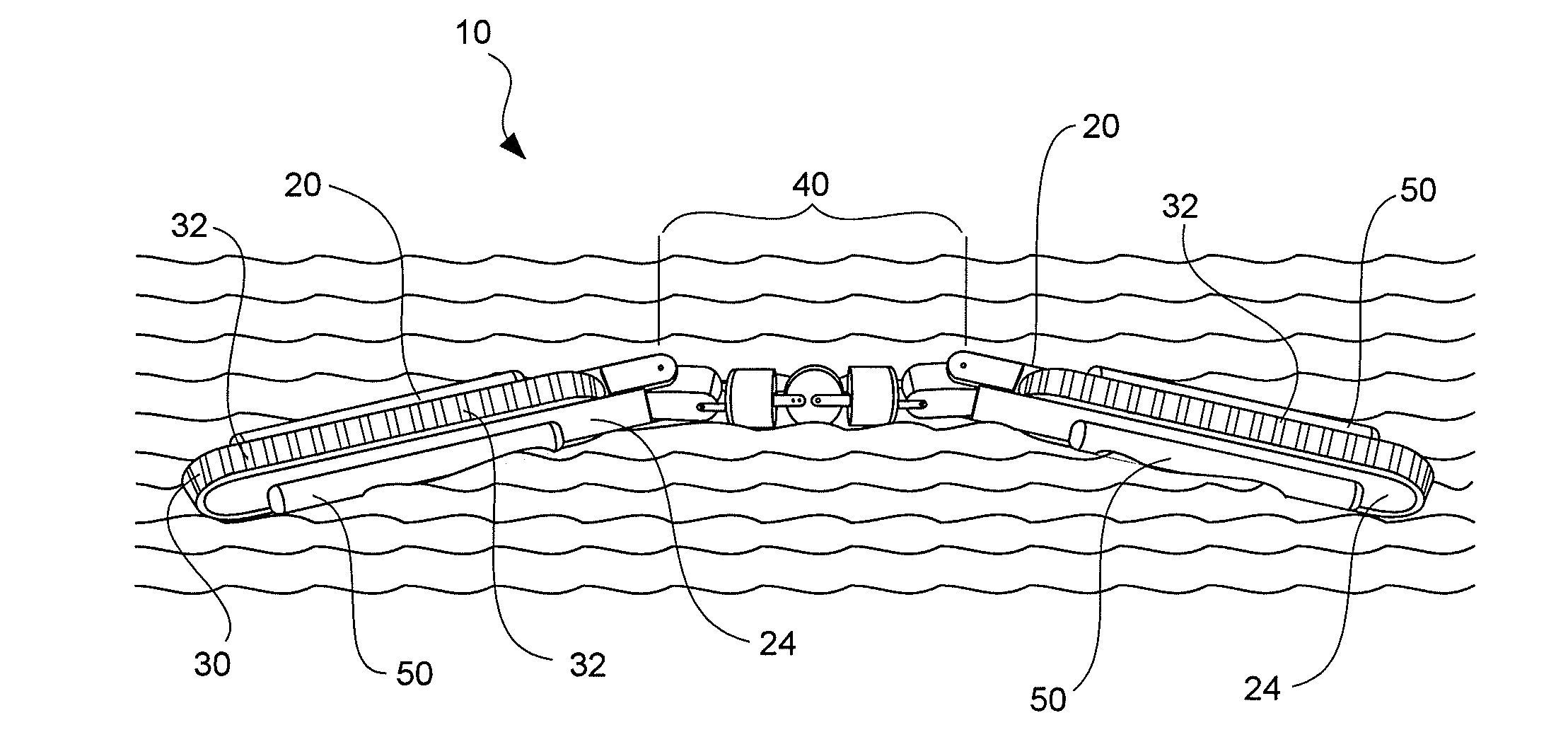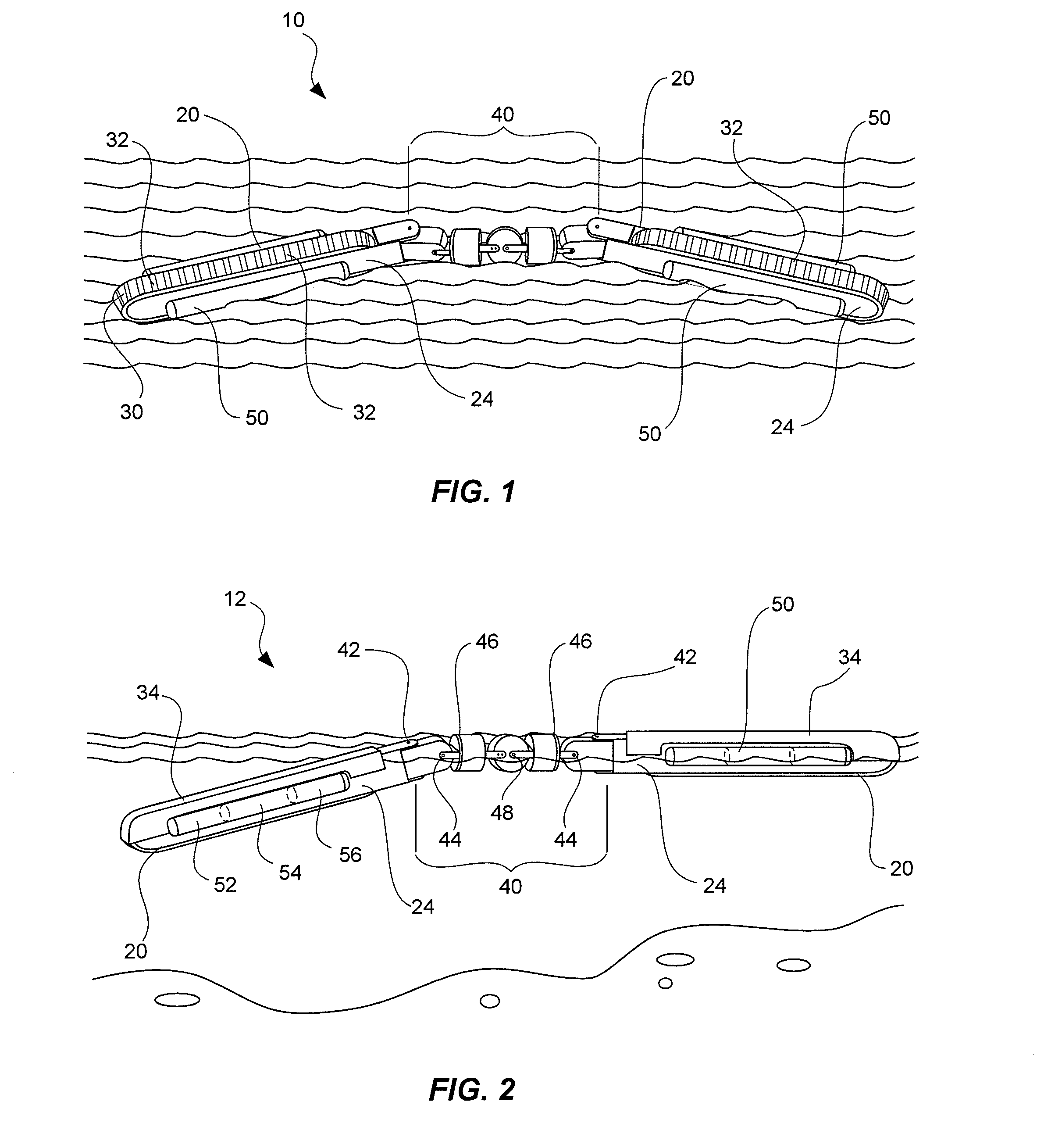Amphibious Robotic Crawler
a robotic crawler and amphibious technology, applied in underwater equipment, underwater equipment, vessel construction, etc., can solve the problems of unmanned ground vehicles that are not easy to operate, unmanned ground vehicles face many challenges, and vehicles optimized for operation in one environment may perform poorly in other environments, and achieve the effect of improving mobility
- Summary
- Abstract
- Description
- Claims
- Application Information
AI Technical Summary
Benefits of technology
Problems solved by technology
Method used
Image
Examples
embodiment 12
[0040]In the embodiment 12 of the present invention illustrated in FIG. 2, one surface of the continuous track 30 can be covered with a shield 34 that prevents the water from contacting the covered section of the continuous track while selectively permitting the uncovered section to substantially engage the water. The shield 34 can also be a mission configurable option that is removably attached to the housing 24 of the frame unit 20 before introducing the crawler 10 into the amphibious environment, and can be discarded after the crawler transitions from water to land to facilitate greater maneuverability of the crawler as it subsequently traverses ground terrain and obstacles.
[0041]In another embodiment 14 of the present invention exemplified in FIGS. 3 and 4, the continuous track 30 can be provided with an asymmetric propulsion-enhancing tread which can provide an asymmetric thrust between the top and bottom surfaces of the tracks, to increase the mobility of the amphibious roboti...
embodiment 18
[0048]In another representative embodiment 18 illustrated in FIG. 6, the amphibious robotic crawler can be provided with an auxiliary thrust or propulsion module 70, such as a propeller system or water jet, etc. The auxiliary thrust system can be mounted into a thrust pod 72 supported on actuatable arms 74 deployed from a frame unit 20, which arms can rotated upward to a raised position to lift the thrust pod above the crawler as it moves over the ground. The arms can then rotate downwards during water operations to locate the thrust pod in a optimal orientation for propelling the crawler through the water. Like the buoyancy control elements described above, the propulsion modules can be detached and discarded after transitioning from water to land to facilitate greater maneuverability of the crawler as it subsequently traverses ground terrain and obstacles.
[0049]FIG. 7 is a flow chart depicting a method 100 of operating a segmented robotic crawler through a body of water, which inc...
PUM
 Login to View More
Login to View More Abstract
Description
Claims
Application Information
 Login to View More
Login to View More - R&D
- Intellectual Property
- Life Sciences
- Materials
- Tech Scout
- Unparalleled Data Quality
- Higher Quality Content
- 60% Fewer Hallucinations
Browse by: Latest US Patents, China's latest patents, Technical Efficacy Thesaurus, Application Domain, Technology Topic, Popular Technical Reports.
© 2025 PatSnap. All rights reserved.Legal|Privacy policy|Modern Slavery Act Transparency Statement|Sitemap|About US| Contact US: help@patsnap.com



